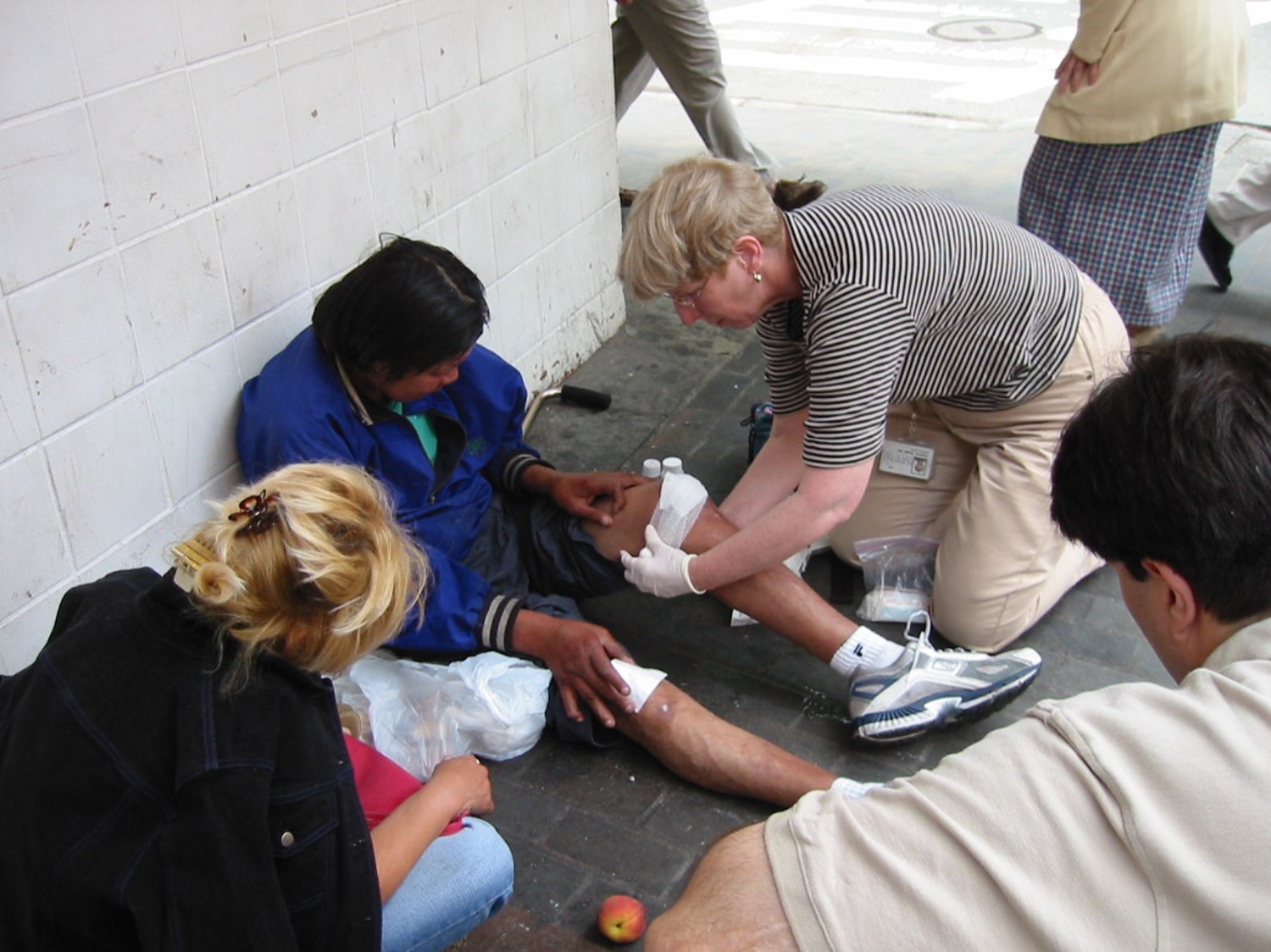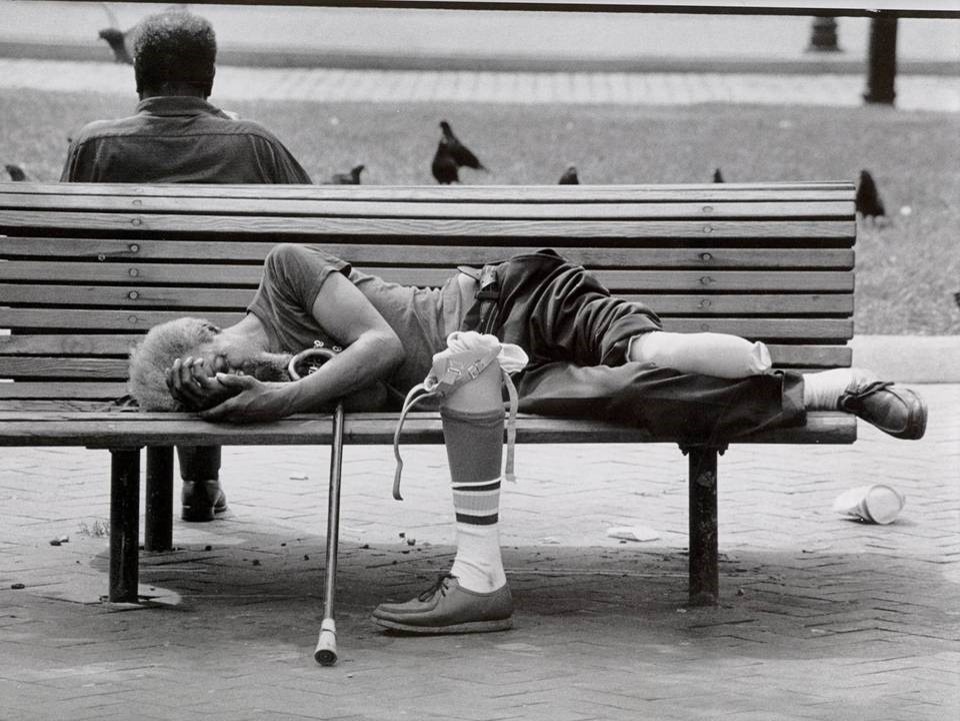
Homelessness, already a significant challenge in urban areas has been exacerbated by the COVID-19 pandemic. Homelessness is often accompanied by poor health, which together feeds a cycle of vulnerability and increased pressure on health care resources. Street Medicine, taking adapted healthcare services to the homeless, provides a bridge between the street and hospitals—improving outcomes and strengthening service delivery to a vulnerable population.
After the emergence of COVID-19 in early 2020, the entire world felt unsafe and authorities universally demanded that citizens stay at home. This measure was supposed to protect us from the “mysterious” virus and to ensure that our health will not be compromised. What then, was to become of individuals without a home? In Israel, the city of Tel Aviv has the country’s highest rate of people experiencing homelessness. Making things worse, COVID-19 has brought about a further increase in this number. According to an internal report commissioned by the city’s municipality, there has been a 35.8% increase in new social service referrals for people experiencing homelessness since the start of the pandemic in Israel.
Housing is much more than four walls and a roof over your head. The same logic follows for the meaning of being homeless. Homelessness is not only a lack of shelter; it is also, and mostly, to do with a lack of opportunities to promote quality of life and human relations. Deprivation of community life and access to basic services is a denial of basic human rights. The lack of access to basic healthcare that people experiencing homelessness must endure is a major issue, in Israel and around the world. The mistrust that many homeless people harbor toward the health system is profound; it contributes to their unwillingness to seek medical attention, due to their fear of experiencing frustration or humiliation. This is despite the clear need for medical care in this population, as many suffer from mental health and substance abuse issues, as well as HIV, Hepatitis C, and other medical conditions. In many cases, homeless people only go to the emergency room when their health problems are already at an advanced stage. Seeking medical care often takes a backseat to find food and shelter. This leads to the high morbidity rates witnessed in the homeless community and the increased stress on state resources due to frequent and potentially avoidable hospitalizations by managing medical problems before they worsen to the point that the patient has to go to the emergency room, lowering the cost of treatment for these patients. A hypothetical example is that of an infection caused by a diabetic ulcer, resulting in the amputation of the patient’s leg. This amputation, and subsequent hospitalizations, could have been avoided if medical treatment had been available to him at an earlier point—saving money, and preserving his mobility and quality of life. According to a report published by the American Hospital Association (AHA), individuals experiencing homelessness are five times more likely to be admitted as inpatients and usually stay in the hospital for longer.
Traditionally, there are three factors contributing to becoming homeless.
1. Underlying factors such as high rates of unemployment, insufficient social and mental health services, and the lack of affordable or institutional housing. In many cases, this is a failure of political processes, which doesn’t recognize the basic human rights of the homeless.
2. High-risk events like evacuation from home, accidents, illness, family crisis, release from prison, etc.
3. Membership of potentially high-risk groups, such as minors without family support, individuals from deprived socio-economic background, active drug users, and people suffering from mental illness. These factors can create barriers in many forms, which are likely to be exacerbated if substance abuse is involved.
When we witness an individual experiencing homelessness, even in a country like Israel with a relatively high Human Development Index (HDI) rating (0.919), we can make an educated guess that this individual is affected by a mix of the factors mentioned above. Barriers of culture, economic wellbeing, and other circumstances create gaps between a growing number of people in the homeless community and the healthcare system. In order to bridge these gaps, “street medicine” programs have started to emerge, beginning with the establishment of the Street Medicine Institute, in 2008, by Dr. Jim Withers of Pennsylvania, the United States.

Street Medicine teams are made up of health professional volunteers (such as doctors and nurses) and social workers. These volunteers provide health and social services, developed specifically to address the unique needs and circumstances of the unsheltered homeless, and delivered directly to them in their own environment. Street Medicine programs use practices like “Reaching Out” to try and try to build relationships with clients while providing medical care. After proper training and education about the needs of the homeless community, the professional teams work directly with patients, equipped with the tools and skills to better understand that person’s reality and to create trust—crucial with this socially marginalized and highly vulnerable population. In addition, Street Medicine programs employ “harm reduction” practices, by providing medical care for substance users, and educating them about safe use—honoring the dignity of the person by not passing judgment. This task poses numerous challenges. These include the challenge of providing effective treatment in unsanitary conditions—more complex when patients do not have a permanent place to live and are under physical and psychological stress. Most of them do not get proper sleep and are undernourished. In some cases, it is hard for some of them to get better due to their continuous and active drug use, especially by means of unsanitary practices, which creates a cycle of internal and external infections that is difficult to break.
Street medicine teams act as a bridge, bringing medical care to the street and creating connections with hospitals and health care centers by advocating for their patients taken to the emergency room, educating health care professionals of the challenges that patients experiencing homelessness face that distinguish them from other patients (for example withdrawal symptoms, which will inevitably occur during the hospital stay).
“Local analyses of current Street Medicine services indicate that they have made a major impact on health care for the street homeless communities that they serve, particularly with regard to expenses and misuse trends.”
Nowadays, Street Medicine programs are operating around the world. Data from the Street Medicine Institute website shows it has helped develop and improve Street Medicine programs in more than 85 cities in 15 countries across 5 continents, including Nigeria, Nepal, India, and South Africa. Local analyses of current Street Medicine services indicate that they have made a major impact on health care for the street homeless communities that they serve, particularly with regard to expenses and misuse trends. These include a decrease in visits to emergency departments, hospital admissions, and periods of stay in hospitals.
In Israel, there is a mobile clinic operating in Tel Aviv, commissioned by the Ministry of Health, but its scope is limited to treating individuals in prostitution and reducing the spread of Sexual Transmitted Diseases alone. There is a need on the streets of Tel Aviv for the provision of medical treatment to individuals experiencing homelessness—especially active drug users suffering from infections not caused by sexual contact. With a team of volunteer doctors, nurses, and paramedics, and supported with Glocal Seed Funding, I am currently developing the first Street Medicine Program in Israel. This will be piloted in Tel Aviv later this year. We will meet patients where they are, with the objectives of better understanding the challenges they face and promoting their health and well-being. In this way, we hope that Israel’s Street Medicine Program will be, for some individuals, the first essential step to achieving higher levels of medical, mental health, and social care, through assertive, coordinated, and collaborative care management.
There is a realization, in these times of the COVID-19 pandemic, that we are all living in the same world and we are all affected by the virus. Providing medical care with Street Medicine may also be instructive for health care systems, by improving access and efficacy for the general population and other socially excluded and medically complex individuals.
Ronnie-Lee Sneh
Certified social worker and Glocal alumni. She has worked in the humanitarian field in Uganda and Israel, where she gained insights into the unique challenges and acute burden of excluded communities. Her first-hand experience working with people experiencing homelessness in Israel, allowed her to identify a gap and act to fill it. She is the co-founder of the first of its kind program in Israel, “Street Medicine Israel” with Home-Base NGO. Together they provide medical care for people experiencing homelessness.


